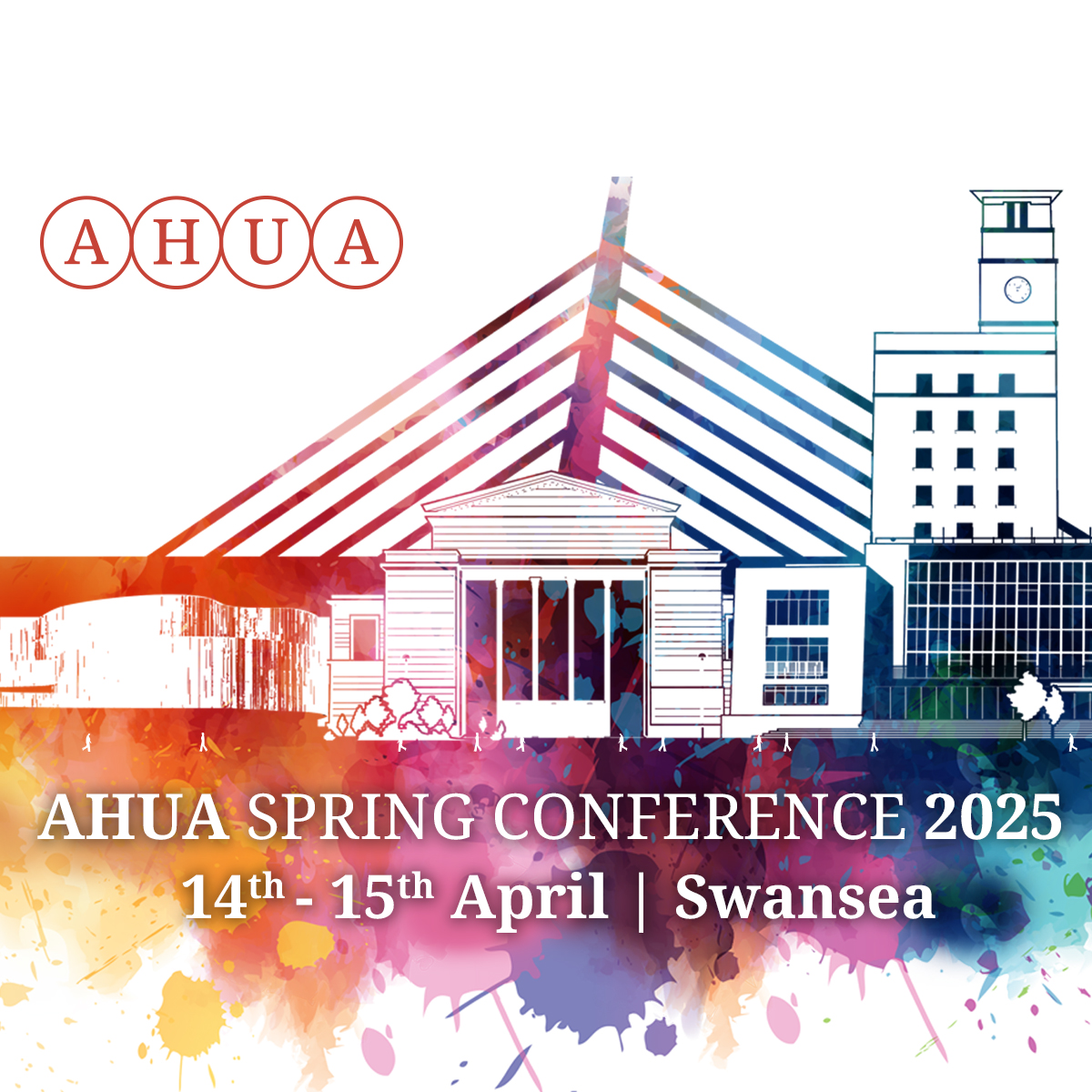Book review: The New Power University
What is the social purpose of higher education? Dr Paul Greatrix, Registrar at the University of Nottingham, reviews The New Power University by Jonathan Grant.

It’s always good when a new book about universities emerges which has a bit of a positive buzz around it.
Jonathan Grant’s The New Power University (Pearson Education Limited, 2021) certainly fits that bill and offers a relatively accessible, entertaining, and at times provocative read.
The book contains quite a number of really interesting ideas. While the overall concept doesn’t quite hang together, all credit to Grant for coming up with the idea, which is a bold and timely effort to reconceive the traditional university model.
The emphasis is intended to be very much on what Grant describes as the social purpose of the university, but also ‘new power learning’ and ‘new power research’, students, staff, governance, structure, community engagement, and political advocacy.
However, the topicality of the approach runs the risk of looking a little too temporary.
Grant draws on the values, participation, and networking underpinning Airbnb and Uber type structures and business models, together with contemporary approaches of crowdsourcing, social media supported campaigns, such as BLM and #MeToo. As such, there is a danger of some of these being too fleeting on which to base a long term university structure or strategy.
Grant rightly argues that universities need to change to adapt to the realities of the 21st century. However, attempts to be at the cutting edge of that change in organisational and delivery terms risk looking a bit wobbly in the long run.
The avalanche is still coming
Grant refers positively to Barber’s 2013 piece, ’An avalanche is coming’, which predicted massive disruptive action impacting on universities as a result of the growth of MOOCS.
He remains convinced the Uberisation, Spotification, and Amazonification of Higher Education is just round the corner though: “The avalanche is coming, the question is not if but more when.”
To reject this simplistic approach is not complacent. Rather it recognises that the way in which universities have embraced digital during the pandemic demonstrates that we can progress successfully in this domain without the fear of being swept away.
Grant notes that Coursera, Udacity, et al do not have the powers of universities to accredit their offering, and describes this representing old power privilege and protectionism.
But is it really proposed that New Power learning means that universities simply let anyone accredit anything and anyone can award degrees?
This is not about restricting access to HE, rather it is about recognising that qualifications and academic credit actually mean something. If everyone can give them away like sweeties then they mean nothing to anyone, and all pre-existing qualifications are devalued too.
It is difficult to see how allowing every corporation to award degrees is somehow more progressive: would BMW and Barclays controlling access to accredited degrees help the New Power University?
And presumably none of these companies would have much interest in using any income from fees to cross-subsidise blue skies research.
Activist students
I did find myself very much at odds with the author on some aspects of student engagement and activism.
Grant rightly comments on the need to recognise the differences in the needs of Gen Z students. Universities have to seek to engage more appropriately and provide the right environment and resources for them.
However, surely it is the role of student movements themselves to decide how they want to develop and deliver their activism. They don’t need lectures on it, or instruction in how Gen Xers think Gen Z rebels should behave (and of course large numbers of students are from earlier generations too).
Universities provide significant resources, space, and facilities for students’ unions to enable students themselves to decide these, and many other things, for their members, the overwhelming majority of whom are unlikely to see themselves as activists.
The author clearly had a formative experience involving a student occupation which, unusually, seemed to result in a change of heart on the part of his university’s leadership. Yet, it feels to me that the conclusions drawn from this example really do not warrant the weight given to them in different parts of the book.
From research to social responsibility
On research, Grant argues that “the current approach to research funding has come to be an archetype of an old power institution.” We can argue about the research agencies and who heads them and how they reach their decisions.
However, if the “challenge for the New Power University is to move to the forefront of a transformation in the way that research is designed, delivered, and disseminated” then the New Power University (NPU) still has to decide how to do all this with a whole lot less money. This is what things are looking like for the near future at least, and it is not at all clear how this will be addressed.
The book is strong on social responsibility. It is argued that it should be central to the mission of the NPU. Grant suggests that universities aren’t doing enough to communicate the great socially responsible activities they are undertaking.
It is hard to disagree with most of this but the claim (repeated several times) for one institution’s insourcing as a progressive step is undermined a little by the lack of evidence for the implicit assumption that most universities have outsourced cleaning and catering staff.
Reconceiving academia and professional services
Some of the most controversial proposals in the book are about challenging the “old power dynamics which embed and protect long-standing employment practices and structures.”
Grant presents conceptions of academic freedom and institutional autonomy as forms of resistance which have “held back the changes needed to widen access to education, increase the impact of research and ensure universities organise and run themselves in equitable and sustainable ways.”
Therefore, a completely new model is proposed which builds on Celia Whitchurch’s concept of ‘third space professionals.’ This is a really interesting and credible proposition, but one which very much operates in a narrow space where professional services and academic work intersect, especially around curriculum development, learning technologies, assessment approaches and the like.
Grant suggests these third space professionals will be the dominant workforce in the NPU, and the numbers of academics (researchers and teachers) and professional staff (all of those finance, HR, academic registry staff, welfare advisors, librarians, cleaners, security staff etc) will shrink.
This does not seem to be wholly convincing. The NPU is going to have to make quite a few people, currently doing essential work, redundant, and it is not actually clear what this sizeable group of new staff is actually going to do which is different.
I must admit to being pretty unsettled at the easy dismissal of the work of professional services staff, and the rather lazy suggestion that there is too much of “the HR tail wagging the organisational dog.” All those pesky employment laws, EDI considerations, and work visas will just have to look after themselves it seems.
For the academic workforce, I’m not sure that all will embrace the expansion of sessional working and flexible contract terms. Nor, I suspect, will those students occupying buildings welcome the rise of the academic gig economy. It really is not clear how developing a host of self-employed freelance researchers, and the creation of the gig academic, breaks down the academic/professional divide (or indeed addresses the pensions challenge).
Structures and stances
The discussion on future structures and governance in the NPU are similarly radical, but also still a bit sketchy.
One proposition, of using “societal challenges as a primary organisational principle,” may not be popular with academics who will be expected to break free from all those old power structures, their disciplinary homes, and departments.
Grant suggests that “the governance of overcentralised managerial regimes of old power university [sic] is complicated by ‘bicameralism.’” He argues that this should be replaced with “networked modalities for shared decision making,” while offering a few suggestions about what this actually means, including operation as a co-operative.
He also proposes a range of novel methods of selecting governing body memberships, which would probably not find favour with the Committee of University Chairs. But then, that is rather the point I expect.
Even more bold is the idea of a federal structure of universities, a bit like a US state HE system or an airline alliance, although the details, including some pretty thorny employment issues, are not really spelled out here.
Grant also argues that the NPU must be an advocate and avoid political neutrality. He argues that old power interests in protecting their position and privileges have underpinned universities not taking a stance on political issues.
I really think this has much more to do with the very real issue of charitable status and the alignment of adopted positions with a university’s educational objects. What is more important, I would argue, is protecting the right of academics to speak out and ensuring they enjoy genuine academic freedom.
Conclusion
I do think those with an interest in university leadership, management and organisation will find this book stimulating and challenging in places.
The New Power University is an interesting model, containing a range of provocative suggestions, not all fully worked through, but worth consideration nevertheless.
Propositions for radical change are always going to be difficult in long established structures like universities. They have to be genuinely compelling to stand a chance of gaining traction. Arguably the strongest case Grant makes is that social responsibility should be seen as the third mission of the NPU alongside learning and research.
However, the timing of the book meant that Grant had limited opportunity to address the impact of the pandemic on universities. This is unfortunate and does rather undermine his support for Barber’s avalanche argument.
He also seeks to make a virtue out of avoiding university finances, but this feels like a really fundamental omission given the impact resourcing has on most aspects of the proposition here.
Overall, therefore, the NPU model doesn’t entirely hold together, but has much in there to stimulate further consideration as higher education heads into uncharted post-pandemic territory.
Dr Paul Greatrix is the Registrar at the University of Nottingham.
Related Blogs




1 Comment
David Duncan